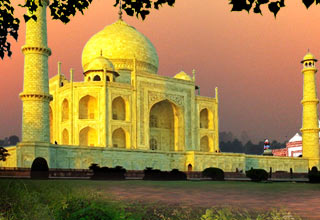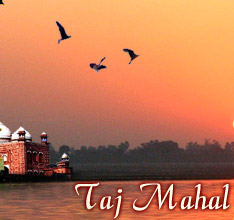 In
Taj Mahal, irrigation mechanism was a much planned and thought out
design. It was no less than a challenge to ensure even pressure of water
in all the fountains and the architect came up with an intelligent plan
for installing the correct Taj Mahal water devices. The pipes of the
fountains were not directly connected to the copper pipes that would
supply water to them. Instead, each fountain was fitted with a copper
pot underneath in which the water would get collected first and then due
to pressure it would thrust the water upwards.
In
Taj Mahal, irrigation mechanism was a much planned and thought out
design. It was no less than a challenge to ensure even pressure of water
in all the fountains and the architect came up with an intelligent plan
for installing the correct Taj Mahal water devices. The pipes of the
fountains were not directly connected to the copper pipes that would
supply water to them. Instead, each fountain was fitted with a copper
pot underneath in which the water would get collected first and then due
to pressure it would thrust the water upwards. Thus, the pressure in the copper pots would be responsible for pushing the water upwards and not the pipe that fed the fountain with water. Since the pressure in the pots is evenly distributed all of the time, it ensured smooth functioning of the fountains all over the garden. This was truly the work of a mastermind and required not just clear thinking but also a smooth planning and designing. It is surprising that even during the ancient days people used to come up with brilliant engineering and architectural ideas just to make sure that the garden always remains irrigated.
The main supply of water was acquired from earthenware pipes that were laid underground. One such main pipe was found in the western canal. The garden was regularly irrigated through interconnected canals. The North-South canals and East-West canals used to be overflowing and the fountains provided these inlets for the canals. It is said hat the Taj Mahal is the only monument in the world that had such a planned irrigation system that works till date.










